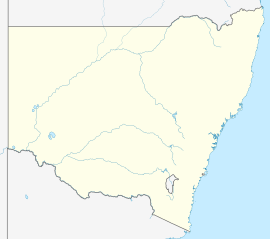Lilyvale, New South Wales facts for kids
Quick facts for kids LilyvaleSydney, New South Wales |
|||||||||||||||
|---|---|---|---|---|---|---|---|---|---|---|---|---|---|---|---|
| Population | 5 (2016 census) | ||||||||||||||
| Postcode(s) | 2508 | ||||||||||||||
| LGA(s) | Wollongong, Sutherland | ||||||||||||||
| State electorate(s) | Heathcote | ||||||||||||||
| Federal Division(s) | Hughes | ||||||||||||||
|
|||||||||||||||
Lilyvale is a small area in New South Wales, Australia. It is located inside the beautiful Royal National Park, south of Sydney. Most of Lilyvale is now part of the Royal National Park and the Garawarra State Conservation Area.
Long ago, Lilyvale was a small village. It had about 200 people living there. The village was near the old Lilyvale railway station. This station was open from 1890 to 1983. It was on the South Coast railway between Helensburgh and Otford.
Contents
History of Lilyvale
Early Life and Settlement
Long ago, Aboriginal peoples lived in the Lilyvale area. The Wodi Wodi people were among the last to live there. The land was very difficult to travel through. It had steep valleys and thick rainforests.
People who cut down cedar trees came to the area first. This was even before other settlers arrived. Lilyvale became a quiet, country area. It was at the northern end of the Bulgo Valley. The Hacking River also flowed nearby.
Village Life and the Railway
The village of Lilyvale started in 1884. It began as a camp for building the railway. Later, it helped the Metropolitan Colliery, which was a coal mine. There was also a timber mill nearby. People also raised cattle and grew fruit on farms.
The railway line through Lilyvale opened in 1888. A railway station was built in Lilyvale on October 1, 1889. There was even a hotel, the Metropolitan Hotel, above the railway station. New areas for homes were planned near the station.
A post office opened in Lilyvale on October 1, 1898. It closed in 1931.
Fires and Changes
On January 4, 1909, a big bushfire hit Lilyvale. It burned down most of the village. Many farms around it were also destroyed.
The village got a boost from 1914 to 1920. The railway line was made straighter and had two tracks. In the 1930s, during hard times, Lilyvale became a camp for people looking for work.
In 1934, Garawarra Park was created. It was a large area of land east of the Hacking River. This park became part of the Royal National Park in 1967.
More bushfires hit Lilyvale in 1952. These fires destroyed what was left of the village and its farms.
Later Years and Modern Day
From 1952 to the late 1970s, a company called Lilyvale Mushrooms operated here. They grew mushrooms in two old railway tunnels. These tunnels were between Lilyvale and the Metropolitan Colliery.
Much of the land around the old coal mine was taken over by the government. This land, once used for trees and farms, became the Garawarra State Conservation Area in 1987.
In 1989, the railway authority removed the old railway station. They also destroyed the footbridge and a nearby vehicle bridge over the railway.
Heritage Sites
Lilyvale has some places that are important to history. These are called heritage-listed sites. They include:
- The old railway tunnels: Lilyvale railway tunnels
- Parts of the Royal National Park: Coastal Cabin Communities


